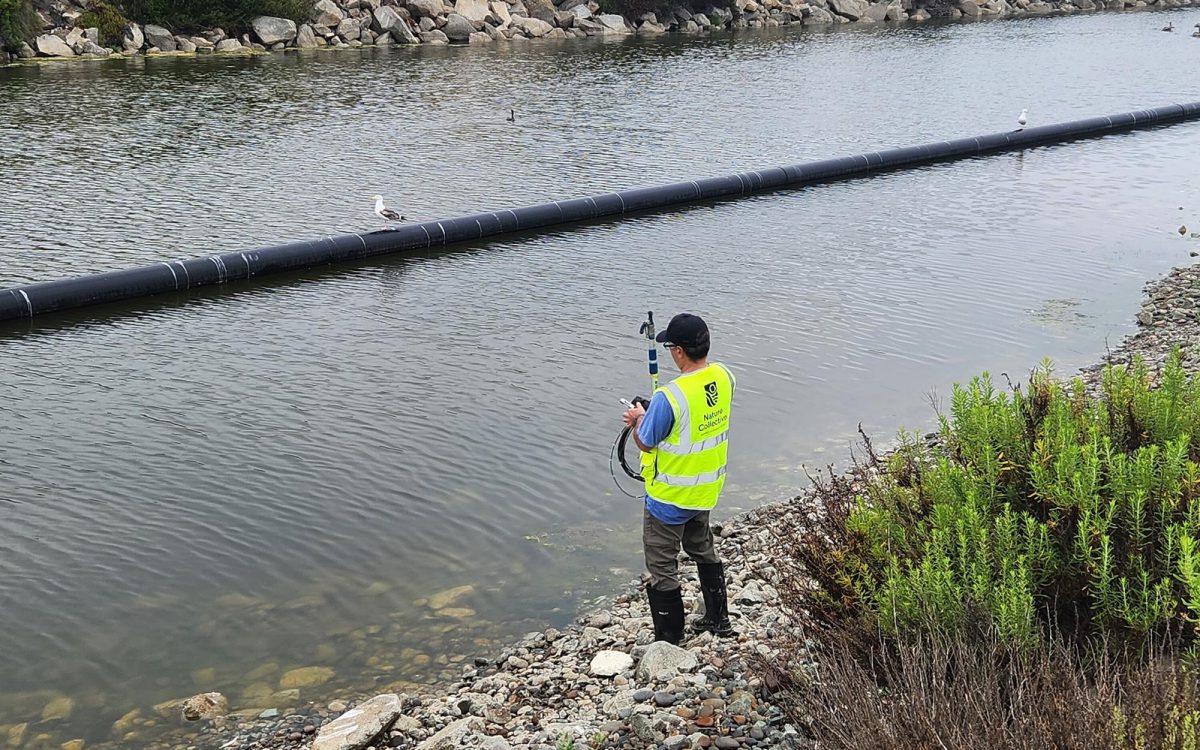
A Nature Collective monitor tests the oxygen levels of water in the San Elijo Lagoon in Encinitas early June 7. (Nature Collective photo)
The Nature Collective is warning of a potential fish die-off in San Elijo Lagoon in Encinitas after monitors observed a drop in water oxygen, the organization announced Friday, June 6.
There had been signs of improvement as of Saturday, according to an update, but the concern remains. Although heat is often a trigger of such events, the reason behind this recent change is unclear. The Nature Collective, which oversees the ecological reserve, stated that the lagoon system’s current lack of tidal flow might be a reason.
“Nature Collective staff monitored the lagoon at 6 a.m. today, and water quality remains stable since yesterday,” the organization’s update stated. “Although a minor number of fish were observed in the west basin, the dissolved oxygen levels, although low, are currently adequate.”
The Nature Collective had initially anticipated a significant die-off over the weekend, however.
“This week, our team has been monitoring water quality more closely than usual. Over the last 72 hours, there have been signs the system is under stress and sudden, with a sudden and significant drop in dissolved oxygen levels,” the organization reported via email to supporters on Friday. “This sudden shift is concerning. Today’s oxygen readings suggest we are likely to see a large fish loss this weekend. We suspect this because oxygen levels, which briefly recover during daylight, drop at night. They are now at a level where we expect they’ll dip into the danger zone after dark.”
Despite the lack of tidal flow, caused by a buildup of sand at the mouth of the lagoon where it meets the surf in Cardiff, the wetlands had been able to maintain adequate dissolved oxygen levels since last September. A dredging project to clear the way for stronger tidal flow had been scheduled to begin in January but has faced delays, according to the Nature Collective.
Equipment necessary for the job is now expected to arrive by June 10. It will take time for water improvements to show, however. The sand buildup is also large.
“Restoring tidal flow is a complex process and it will take about four weeks to complete,” the Nature Collective stated Friday. “The sand shoal is unusually large — about 70,000 cubic yards and half a mile long — which makes it difficult to clear using standard methods.”
Emergency methods to improve the wetlands’ health are not as likely to work as they might otherwise, according to the organization. A “punch-through” method works when water flow past Coast Highway 101 is high enough, but that is not the case now. Heavy equipment for sand removal by land also isn’t feasible because the pipe for the dredging project is already in place.
Nature Collective representatives will be at Annie’s Canyon Trail over the weekend to answer questions from visitors.
(adsbygoogle = window.adsbygoogle || []).push({});
